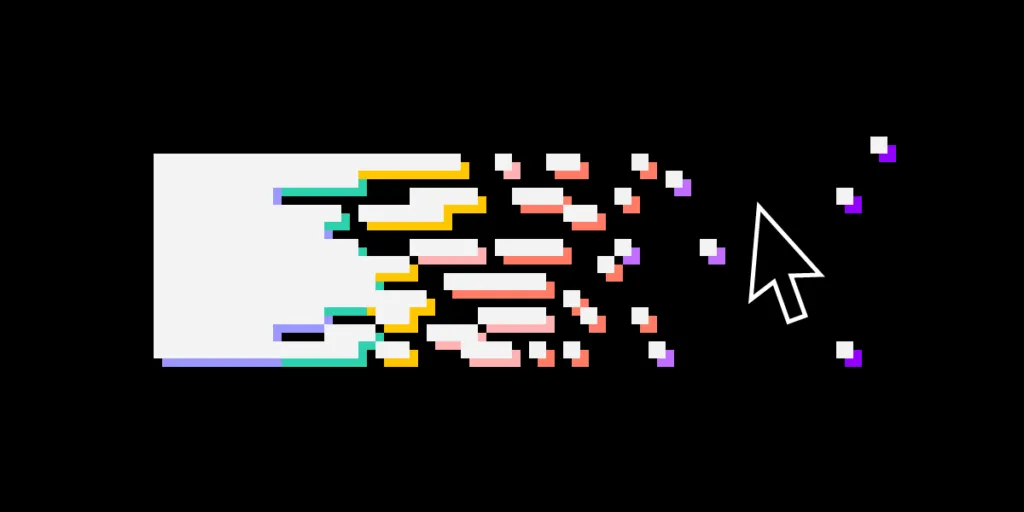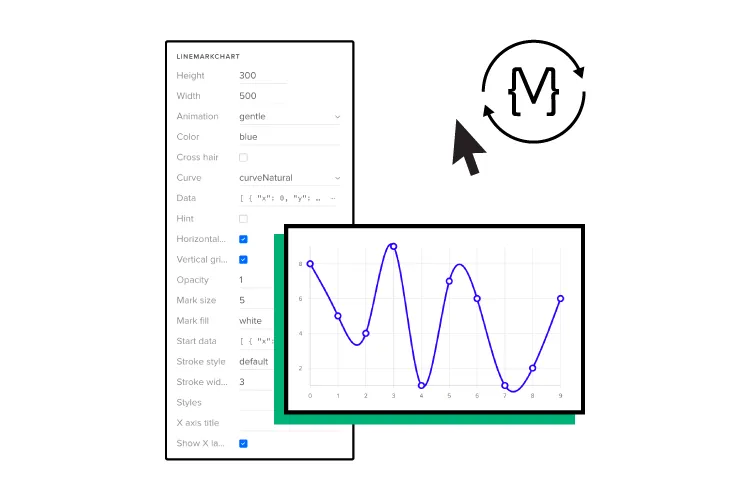The Future of Product Design – Top 2025 Predictions

We’ve looked at various trends and technology to make predictions for the future of product design. Rather than put on a tinfoil hat and talk about flying cars, we’ve focused on how current tech will evolve and identified some real opportunities for product designers and developers to innovate.
This article explores six key topics: AI, voice user interfaces, code-to-design innovation, humanity-centered design, and smart cities. The opportunities for product designers are immense, with fully interconnected cross-device and platform systems required for the next decade and beyond.
Code to design is the future of product development–and it’s already here. Bridge the gap between design and development with a single source of truth from UXPin Merge. Visit our Merge page for more details.
Table of Contents
AI-Driven Design Systems
AI will become integral to design systems, allowing teams to automate processes, optimize user flows, and create smarter interfaces. By 2025, design systems will incorporate AI to facilitate dynamic component generation. UXPin’s AI Component Creator, for example, already allows designers to generate custom UI components based on high-level design briefs or even user data, speeding up prototyping while maintaining accuracy and consistency with the system’s code.
AI will assist with generating and managing components, ensuring they adhere to brand guidelines and usability principles. Designers can focus on high-level strategy while AI fills in the details, making processes more efficient.
Multimodal and Voice Interfaces
By 2025, designers will need to focus on multimodal interfaces that seamlessly integrate voice, gestures, and touch. Voice User Interfaces such as those in Google Assistant and Amazon Alexa will become even more advanced, allowing for more complex interactions that go beyond simple commands.
Designers will have to blend traditional visual UIs with voice and gesture-based systems, ensuring smooth user experiences across multiple interaction modes.
VUIs will be particularly important in industries like healthcare and automotive, where hands-free interactions are becoming standard. AI-powered voice interfaces will also offer more personalized user experiences, adapting based on user habits and preferences.
AI-Assisted Prototyping and Testing
Prototyping and usability testing will benefit from AI-powered automation. Tools like UXPin Merge and Maze already leverage AI to streamline the design-to-development process, helping with theming, customization, and code-backed component generation.
In addition to automating prototyping, AI will also assist in usability testing. Tools like Maze, which use AI to analyze user interactions, will provide immediate insights and suggest design improvements. Designers will have access to real-time feedback, enabling faster iterations and more user-centered solutions.
Advanced Personalization with AI
Personalization will go beyond tailored content to offer more profound user-specific experiences. Designers will use AI to create custom UI components based on real-time data and user behavior. This will allow product teams to deliver personalized experiences at scale, where interfaces can adjust to individual preferences in real time.
This level of AI-driven personalization will ensure that products feel intuitive and engaging for diverse audiences. Design tools will harness AI to dynamically change layouts, navigation, and other key elements based on how users interact with the product, ensuring a seamless and adaptive experience.
Ethical and Sustainable Design Practices
By 2025, ethical design and sustainability will be non-negotiable components of product design. Tools like Adobe’s Sustainability Toolkit and platforms promoting ethical AI will guide designers in making responsible choices, from minimizing carbon footprints to ensuring inclusivity. AI tools can assist in flagging design decisions that may lead to ethical concerns, such as bias in algorithms or lack of accessibility in interfaces.
AI will also help teams make sustainability-driven decisions by optimizing design resources and reducing data-heavy interactions. Designers will have the tools to balance innovation with responsibility, ensuring their products contribute positively to both users and the environment.
Immersive Experiences with AR and VR
Augmented reality and virtual reality will continue to grow in importance by 2025. Tools like Unity and Blender will be essential for designers looking to create immersive 3D experiences for industries ranging from retail to healthcare. Apple Vision Pro and Meta Quest are pushing the boundaries of what’s possible, and designers will need to adapt by learning new skill sets for creating interactive, multi-dimensional experiences.
AR/VR interfaces will become more intuitive as AI enhances interaction design, making these experiences feel more seamless and natural. These technologies will be integrated into everyday products, from virtual shopping apps to immersive training platforms, creating new avenues for user engagement.
Future Product Design With UXPin

Traditional UX design methods and workflows are slow and cumbersome. The design-to-code process is inefficient and doesn’t facilitate the speed and accuracy required to meet modern technologies and demands.
UXPin Merge and code-to-design are the future of product development. The streamlined design methodology enables anyone from inexperienced solopreneurs to multinational enterprises to prototype and test ideas with code-like fidelity and functionality.
Reasons why code to design enhances product development:
- A single source of truth between designers and engineers from a centralized repo reduces the inefficiencies and challenges of design-to-code workflows.
- Realistic prototypes improve testing so product teams can identify better opportunities and solve more problems during the design process.
- Realistic, interactive prototypes mean stakeholders can accurately visualize the final product resulting in meaningful feedback and increased confidence in the design process.
- Code to design results in faster time-to-market with better quality and fewer usability issues, allowing startups to compete with enterprise organizations.
Take your product design process into the future with the world’s most advanced end-to-end design tool. Visit our Merge page.




